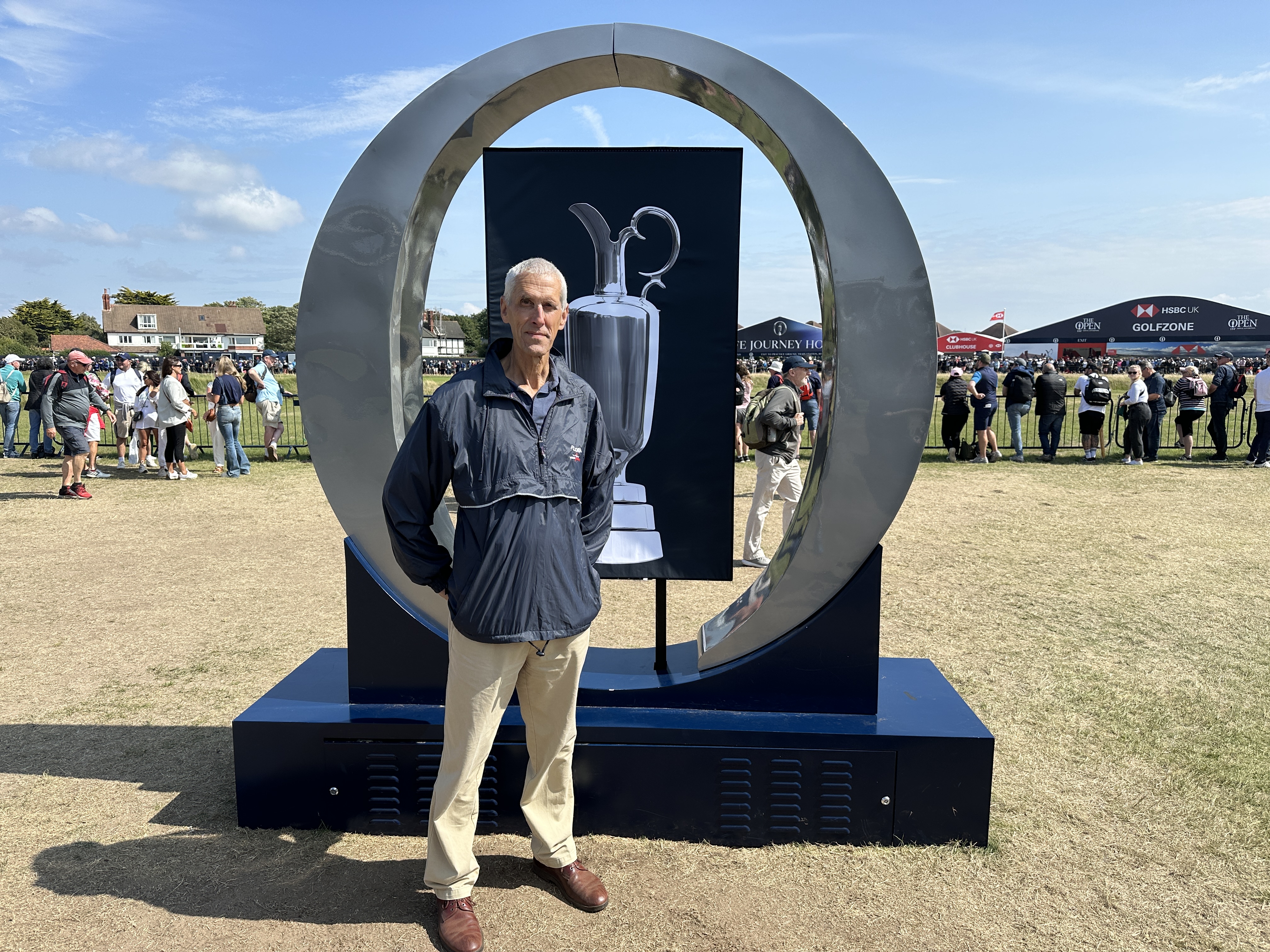HOYLAKE, England — Dustin Raymond is an avid collector of golf memorabilia and he was searching online for buried treasures when he stumbled across an auction of vintage golf photographs from the 1800s.
He flipped through them and could detect that the majority of them were reproductions but a handful were originals.
“Holy cow!” he said he thought to himself. “That’s an original of Willie Park.”
He clicked “buy it now” for the collection of about 100 photos. When they arrived, he remembers thinking, “These don’t belong with me.”
He posted some of the rare photos on the Golf Historian Society Web site, and one of the members suggested he get in contact with Mungo Park, the great grandson of Willie Park Sr., winner of the inaugural British Open in 1860 among his four titles, and named for his great-grand uncle Mungo Park, the winner of the Claret Jug in 1874. It turned out the photo that Raymond bought was rare, indeed, but it was of Mungo Park Sr., not Willie Park Sr.
“There are about six photographs we know of, of him, including that one, which has never been seen before,” Park said.
He could recognize the handwriting of a cousin on the back of the photos. Having them back in the family’s possession meant so much to Park that he asked Raymond what he could do to repay him for his kindness. Raymond simply wanted to meet him at the 151st Open and have a beer. On Thursday, Park drove five hours stopping to charge his electric car along the way, but he and Raymond, two men connected only by a photo that was approximately 150 years old, met during the first round at Royal Liverpool Golf Club. Yours truly snapped some new photos and sat with Park in the horseshoe grandstand surrounding the 18th hole.

Mungo Park Sr., winner of the 1874 British Open. (Courtesy Dustin Raymond)
Park has one of the great names in golf – Mungo is better than even Tiger Woods, right? For nearly eight years, he’s been working on a golf book on Musselburgh and the Park family’s place in the Scottish town’s reputation in the game, which Mungo contends should be better known as the true ‘Cradle of Golf.’ It’s where Mungo Senior won the first Open to be held at Musselburgh, shooting a record 159 to beat Young Tom Morris. That turned out to be his only Open victory. (Willie Park Jr. won two more titles — 1887 at Prestwick and 1889 at Musselburgh.) Mungo wrote in 2011 in an issue of Through the Green, the journal of the British Golf Collectors Society, that his great Uncle “never quite fulfilled his early promise. Like his brother and his nephew, and many after him, he turned to advising on the design and construction of courses, and the teaching of the game. He embarked on the peripatetic and sometimes precarious life of professional golf ‘architect/greenkeeper.’” In the census of 1901, Mungo Sr. was registered as a patient at Inveresk Poorhouse, and he died there in 1904.

Dustin Raymond, right, purchased a rare photograph of Mungo Park Sr., and returned it to family member Mungo Park (left), who is named for him. They met during the first round at the 2023 British Open at Royal Liverpool. (Adam Schupak/Golfweek)
Mungo also pointed a tenuous link between his family and the history of the Open at Hoylake. The 1967 winner, Argentine Roberto de Vicenzo, was a great friend of José Jurado, who had been his mentor and was the first to greet him when he returned home. Jurado had himself won seven Argentine Opens (El Abierto) in his career and was the first from his country to challenge the Europeans and North Americans on their own territory. As well as his Abierto wins, he finished in the top 10 in 4 majors (3 Opens and 1 US Open). “In Wikipedia it says that he began his career as ‘a caddie at the Royal and Ancient Golf Club of St. Andrews,’ which couldn’t be (literally) much further from the truth. In fact he was a caddie at the San Andres Golf Club in Buenos Aires, where he was taught by my grandfather, Mungo Park Jr.,” Mungo wrote. “My grandfather had designed and built the course there, and had himself won the first Abierto in 1905, and won again in 1907 and 1912. He was way down the field in 1922, when Jurado won his first Abierto, but it must have given him great satisfaction to see the success, and later career, of his protégé.
“There is of course another strong link to Musselburgh in that the original nine holes were laid out by Robert Chambers, who learnt his golf in Musselburgh as a child and was captain of Musselburgh Golf Club in 1855 and 1856. He was also a champion golfer, playing for the Bruntsfield Links Golfing Society when he won the first Grand National Tournament at St. Andrews in 1858. He went on to come 10th in the Open in 1861, and brought the Musselburgh Golf Club back to life after a 10-year period of dormancy, prior to the construction of its clubhouse and its centenary in 1874. The Chambers family are often associated with St. Andrews (where R Chambers Snr retired to) and with North Berwick where Robert Jnr built his grand house, and was also a member, but it is perhaps symptomatic of its neglected history that the family’s strong connection with Musselburgh and its clubs, over three generations, is rarely mentioned.
“It is fascinating how the stories of golf history interweave themselves with the social histories of the day.”
Here’s more about the name Mungo and the Park family history in the game from a previous email exchange between Mungo and Golfweek.

A rare photo of Mungo Park, winner of the 1873 British Open. (Courtesy Dustin Raymond)

